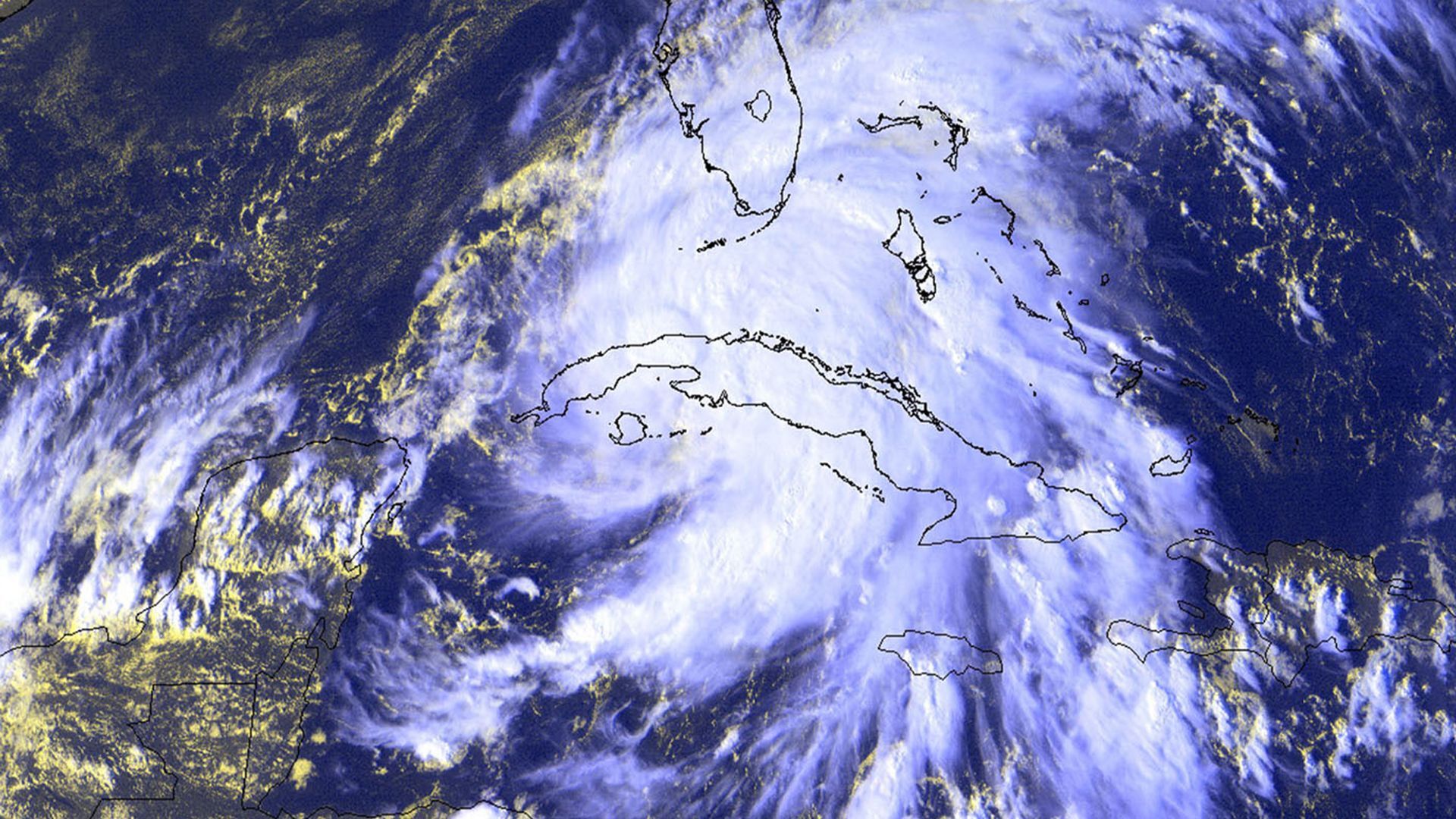
Hurricane season comes to an end after record-breaking year
By Karah Rucker (Anchor/Reporter), Bast Bramhall (Video Editor)
For many families in 2024, the holidays will look different due to a devastating hurricane season. From homes being destroyed to lives lost, this season left a trail of destruction stretching from the Gulf of Mexico to the East Coast.
Media Landscape
See how news outlets across the political spectrum are covering this story. Learn moreBias Distribution
Left
Right
Untracked Bias
The 2024 Atlantic hurricane season, which officially ends Saturday, Nov. 30, has been one of the busiest on record. Meteorologists said 11 hurricanes formed, compared to the typical seven.
One of the earliest and most destructive storms was Hurricane Beryl, which made history as the first Category 4 hurricane to form in June. The storm first slammed into islands in the Caribbean and later became the earliest-ever Category 5 hurricane in the Atlantic on July 1. A week later, Beryl made landfall in Texas as a Category 1 hurricane.

Download the SAN app today to stay up-to-date with Unbiased. Straight Facts™.
Point phone camera here
In September, Hurricane Helene became the deadliest storm to hit the U.S. mainland since Hurricane Katrina in 2005, claiming more than 200 lives. Helene caused nearly $49 billion in damage across several states, including North Carolina, Florida and Georgia.
Homes were destroyed, drinking water systems were knocked offline, farms were wiped out and large areas of forest were decimated. In rural areas of the Carolinas, where flooding is rare, communities were under several feet of water. The effects of the storm were felt as far north as the Great Lakes, where heavy rainfall triggered widespread flooding.
As the season continued into October, Hurricane Milton rapidly intensified, reaching wind speeds of 180 miles per hour. Milton became one of the strongest hurricanes ever recorded in the Gulf of Mexico, second only to Hurricane Rita in 2005. The storm came on the heels of Helene, compounding the already severe damage in some regions of Florida.
Even as the season neared its end, another storm formed. Hurricane Rafael, which nearly became the strongest November hurricane on record in the Gulf, reached winds of up to 120 miles per hour as it hovered over Cuba.
Get up to speed on the stories leading the day every weekday morning. Sign up for the newsletter today!
Learn more about our emails. Unsubscribe anytime.
By entering your email, you agree to the Terms & Conditions and acknowledge the Privacy Policy.
With each storm’s passing, recovery efforts followed. But with back-to-back hurricanes like Helene and Milton, disaster relief efforts were stretched thin. FEMA’s disaster relief fund is now down to less than $5 billion, according to agency testimony during the week of Nov. 18. The Biden administration requested nearly $100 billion in disaster aid from Congress, with $40 billion of that earmarked for replenishing FEMA’s disaster relief fund.
While there is relief with the official end of the hurricane season, The Weather Channel cautioned that just because the season is over doesn’t mean no more storms can form. While over 97% of Atlantic storm activity typically occurs between June and September, outlier storms can still wreak havoc.
[Karah Rucker]
FOR MANY FAMILIES THIS YEAR – THE HOLIDAYS WILL LOOK DIFFERENT DUE TO AN ACTIVE AND DEVASTATING HURRICANE SEASON.
FROM HOMES BEING SWEPT AWAY TO LOVED ONES DYING IN THE STORMS –
THIS HURRICANE SEASON LEFT DESTRUCTION ALL THE WAY FROM THE GULF TO THE EAST COAST.
THIS YEAR’S ATLANTIC HURRICANE SEASON WHICH OFFICIALLY ENDS SATURDAY –
has been one of the busiest on record.
Meteorologists say 11 hurricanes formed, compared to the typical seven.
One of the earliest and most destructive storms this year was Hurricane Beryl.
It made history as the first Category 4 hurricane to form in June –
FIRST SLAMMING INTO ISLANDS IN THE CARIBBEAN.
THEN IT BECAME THE EARLIEST-EVER CATEGORY FIVE HURRICANE IN THE ATLANTIC ON JULY 1ST –
A WEEK LATER MAKING LANDFALL IN TEXAS AT A CATEGORY ONE.
Then, in September, came Hurricane Helene. This storm became the deadliest to hit the U.S. mainland since Hurricane Katrina in 2005, claiming more than 200 lives.
Helene caused nearly $49 billion in damage across several states, including North Carolina, Florida, and Georgia.
Homes were destroyed, drinking water systems were knocked out, farms were wiped out, and large areas of forest were decimated.
RURAL AREAS OF THE CAROLINAS WHERE FLOODING IS RARE WAS SUDDENLY FEET UNDER WATER.
The effects of the storm were felt as far north as the Great Lakes, where unusually heavy rainfall triggered widespread flooding.
As the season continued into October, Hurricane Milton rapidly intensified, reaching wind speeds of 180 miles per hour.
That made Milton one of the strongest hurricanes ever recorded in the Gulf of Mexico, second only to Hurricane Rita in 2005.
WITH MILTON COMING ON THE HEELS OF HELENE – IT FURTHER COMPOUNDED THE ALREADY DEVASTATING DAMAGE IN SOME REGIONS OF FLORIDA.
ALREADY LATE INTO THE SEASON WHEN THE OCEANS ARE QUIETER –
ANOTHER HURRICANE FORMED – RAFAEL – AND NEARLY BECAME THE STRONGEST NOVEMBER HURRICANE ON RECORD IN THE GULF –
WITH WINDS UP TO 120 MILES PER HOUR AS IT HOVERED OVER CUBA.
WITH EACH STORM’S PASSING, RECOVERY EFFORTS WERE QUICK TO FOLLOW.
BUT WITH BACK-BACK HURRICANES IN HELENE AND MILTON – DISASTER RELIEF EFFORTS WERE STRETCHED THIN.
FEMA’S DISASTER RELIEF FUND IS NOW DOWN TO LESS THAN 5 BILLION ACCORDING TO TESTIMONY FROM THE AGENCY LAST WEEK.
THE BIDEN ADMINISTRATION HAS REQUESTED NEARLY 100 BILLION DOLLARS IN DISASTER AID FROM CONGRESS – WITH 40 BILLION OF THAT AIMED AT REPLENISHING FEMA’S DISASTER RELIEF FUND.
WHILE A SIGH OF RELIEF COMES WITH THE END OF THIS YEAR’S HURRICANE SEASON –
THE WEATHER CHANNEL CAME OUT WITH A REPORT SAYING JUST BECAUSE ITS OVER –
DOESN’T MEAN ITS REALLY OVER.
WHILE OVER 97% OF ATLANTIC STORM ACTIVITY HAPPENS BETWEEN JUNE AND SEPTEMBER –
THERE IS YOUR OCCASIONAL OUTLIER STORM –
SO ITS BEST TO ALWAYS BE PREPARED FOR SEVERE WEATHER.
THANKS FOR WATCHING STRAIGHT ARROW NEWS.
FOR MORE STORIES LIKE THIS –
BE SURE TO DOWNLOAD OUR MOBILE APP –
OR FIND US ONLINE AT SAN DOT COM.
Media Landscape
See how news outlets across the political spectrum are covering this story. Learn moreBias Distribution
Left
Right
Untracked Bias
Straight to your inbox.
By entering your email, you agree to the Terms & Conditions and acknowledge the Privacy Policy.
MOST POPULAR
-
 Getty Images
Getty Images
Billions of cicadas emerge in 13 states this spring
Read9 hrs ago -
 Getty Images
Getty Images
Mark Carney to succeed Justin Trudeau as head of Canada’s Liberal Party
Read10 hrs ago -
 Getty Images
Getty Images
DHS sees leadership shakeup amid ICE operation leaks
Read10 hrs ago -
 Reuters
Reuters
Pope Francis health update: gradual improvement
ReadSaturday




